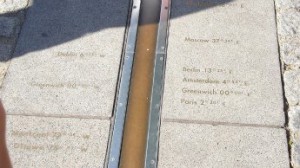Vote Called to End the Use of GMT and Scrapping the Leap Second
International Telecommunications Union (ITU), based in Geneva, is voting in January to finally get rid of the leap second, effectively scrapping Greenwich Meantime.

UTC (Coordinated Universal Time) has been around since the 1970’s, and already effectively governs the world’s technologies by keeping computer networks synchronised by way of NTP time servers (Network Time Protocol), but it does have one flaw: UTC is too accurate, that is to say, UTC is governed by atomic clocks, not by the rotation of the Earth. While atomic clocks relay an accurate, unchanging form of chronology, the Earth’s rotation varies slightly from day-to-day, and in essence is slowing down by a second or two a year.
To prevent noon, when the sun is highest in the sky, from slowly getting later and later, Leap Seconds are added to UTC as a chronological fudge, ensuring that UTC matches GMT (governed by when the sun is directly above by the Greenwich Meridian Line, making it 12 noon).
The use of leap seconds is a subject of continuous debate. The ITU argue that with the development of satellite navigation systems, the internet, mobile phones and computer networks all reliant on a single, accurate form of time, a system of timekeeping needs to be precise as possible, and that leap seconds causes problems for modern technologies.
This against changing the Leap Second and in effect retaining GMT, suggest that without it, day would slowly creep into night, albeit in many thousands of years; however, the ITU suggest that large-scale changes could be made, perhaps every century or so.
If leap seconds are abandoned, it will effectively end Greenwich Meantime’s guardianship of the world’s time that has lasted over a century. Its function of signalling noon when the sun is above the meridian line started 127 years ago, when railways and telegraphs made a requirement for a standardised timescale.
If leap seconds are abolished, few of us will notice much difference, but it may make life easier for computer networks that synchronised by NTP time servers as Leap Second delivery can cause minor errors in very complicated systems. Google, for instance, recently revealed it had written a program to specifically deal with leap seconds in its data centres, effectively smearing the leap second throughout a day.